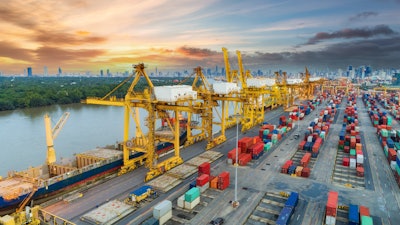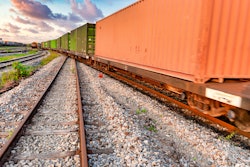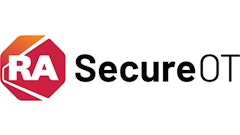
In recent years, the global supply chain has faced significant disruptions, posing challenges for logistics service providers (LSPs). Rising costs, disjointed visibility, capacity management and customer satisfaction are key concerns for stakeholders across the supply chain. Additionally, the port logistics industry has intensified competition as providers strive for enhanced performance to be better positioned for the next resurgence in demand.
To improve efficiency, LSPs, terminal operators, motor carriers and beneficial cargo owners (BCOs) turn to solutions like port technology platforms. These platforms offer opportunities to enhance port operations and manage costs effectively within the dynamic supply chain landscape. Given the obstacles providers encounter in today’s logistics environment, port technology platforms hold promise.
Key Challenges Confronting LSPs
LSPs face several common obstacles with their operations, which are intensified by today’s supply chain dynamics.
- Visibility Challenges: IT silos hinder LSPs from tracking operations and managing goods flow efficiently. Real-time updates on shipment progress are crucial, but delays and increased charges occur due to fragmented information. Sourcing and centralizing data is essential for informed decision-making.
- Fleet Utilization and Availability: With demand recovery likely to bring ripple effects across the supply chain, LSPs are also facing pressure when it comes to managing their capacity. Ensuring space and equipment availability when required across transportation fleets, especially in ground transportation, remains an ongoing challenge. Supply chain dynamics change rapidly, limiting LSPs’ flexibility to adapt to unexpected scenarios.
- Customer Satisfaction and Differentiation: In a competitive landscape, LSPs must customize services to meet unique customer needs. The ability to take more control over port scheduling and final mile execution is a differentiator. Each port has distinct operational requirements, emphasizing the importance of personalized solutions and value-added services.
- Detention and Demurrage Fees: As starkly illustrated during peak-Covid congestion, LSPs grapple with managing detention and demurrage fees, which significantly impact goods flow and operational performance. Demurrage refers to the time containers remain within a shipping terminal after unloading beyond allotted free time, while detention is the excess time spent outside the terminal until return to the port. Although rulings by the FMC and regulatory changes improve the legal landscape, LSPs still require tools to monitor and reduce fee exposure during congestion periods.
Benefits of Adopting Port Technology Platforms
Port technology platforms provide LSPs with a suite of digital tools aimed at enhancing port operations. These platforms offer expanded visibility and scheduling access, streamline invoice management, and grant improved control over fee payments. Below are several key advantages these platforms bring to LSPs in overcoming supply chain obstacles:
- Real-Time Visibility: These platforms give LSPs a comprehensive view of container movements and statuses, enabling more rapid and proactive responses to potential delays and fee exposure. By leveraging cloud-based systems, LSPs gain immediate insights into the whereabouts and condition of shipments, facilitating smarter decision-making and elevating customer service. This visibility provides a more detailed view of terminal appointments, pickup confirmations, moves and performance monitoring.
- Automated Scheduling: Port technology platforms support new approaches to dray logistics management by enabling LSP’s to secure appointments directly, according to customer priorities and preferences, even in advance of tender to a motor carrier. This change removes friction regarding terminal scheduling when port and motor carrier capacity are constrained.
- Enhanced Detention Tracking: Port technology platforms streamline detention management by automating tasks such as tracking container movements and recording arrival and departure times. This automation ensures accurate and efficient detention tracking, allowing LSPs to maintain better control over their operations. Platforms send timely alerts about possible detention situations, creating a proactive approach to minimize unexpected fees. Further, these platforms can also analyze detention trends and patterns, giving LSPs valuable insights and allowing them to negotiate favorable terms with carriers.
- Streamlined Invoice Management: These platforms help LSPs streamline their billing processes, reduce discrepancies, and provide clients with a clearer understanding of the costs associated with detention and demurrage. Automating invoice processing reduces the likelihood of errors and ensures a smooth, timely billing cycle, leading to improved cash flow and financial management. Including detention and demurrage charges into the overall invoicing process simplifies billing and enhances financial transparency by accurately accounting for all relevant charges on invoices.
Embracing Port Technologies for Future Success
Port technology platforms are constantly evolving to help stakeholders navigate the complexities of the modern supply chain. Enhancements, including integrations of AI and machine learning, edge computing solutions, and SaaS model integration, are driving more efficient and sophisticated operations. As technology matures, LSPs will continue to benefit from automation.
The operations challenges shipping stakeholders face highlight the importance of innovative solutions for enhancing efficiency and staying competitive in a swiftly changing industry landscape. By adopting port technology systems, LSPs can access real-time data, automate their workflows and better manage costs - resulting in improved service quality and operational performance.




















